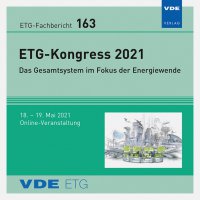Dynamic model reduction based on coherency and genetic optimization methodology
Konferenz: ETG-Kongress 2021 - ETG-Fachtagung
18.03.2021 - 19.03.2021 in Online
Tagungsband: ETG-Fb. 163: ETG-Kongress 2021
Seiten: 6Sprache: EnglischTyp: PDF
Autoren:
Kuri, Ananya; Zhou, Xiaoyu; Mehlmann, Gert; Luther, Matthias (Friedrich-Alexander Universität Erlangen-Nürnberg, Erlangen, Germany)
Kuri, Ananya; La Seta, Piergiovanni (Siemens AG, Erlangen, Germany)
Inhalt:
With the progressing integration of renewable energy sources, stakeholders are increasingly pushing for analyzing the interactions and impacts on the power grid, not solely based on software simulations. The device under test for integration into the grid may be simulated both in an offline and in real-time environment to investigate all possible dynamic interactions. This paper presents a dynamic model reduction methodology customized to accommodate the requirements for real-time (online) and non-real time (offline) analysis. The methodology concentrates on achieving a high degree of reduction, conserving the system behavior at the relevant nodes as precise as possible, and developing an interactive user automation process. The reduction process stems from a hybrid methodology of machine coherency and boundary equivalence achieved via Multi-Objective Genetic Algorithm-NSGA-II. Additionally, the determination and parameterization of the equivalent generators’ controllers are also incorporated in the tooling. The reduced target network is a physical model and therefore suited for online simulations with Hardware-in-the-loop (HIL).


